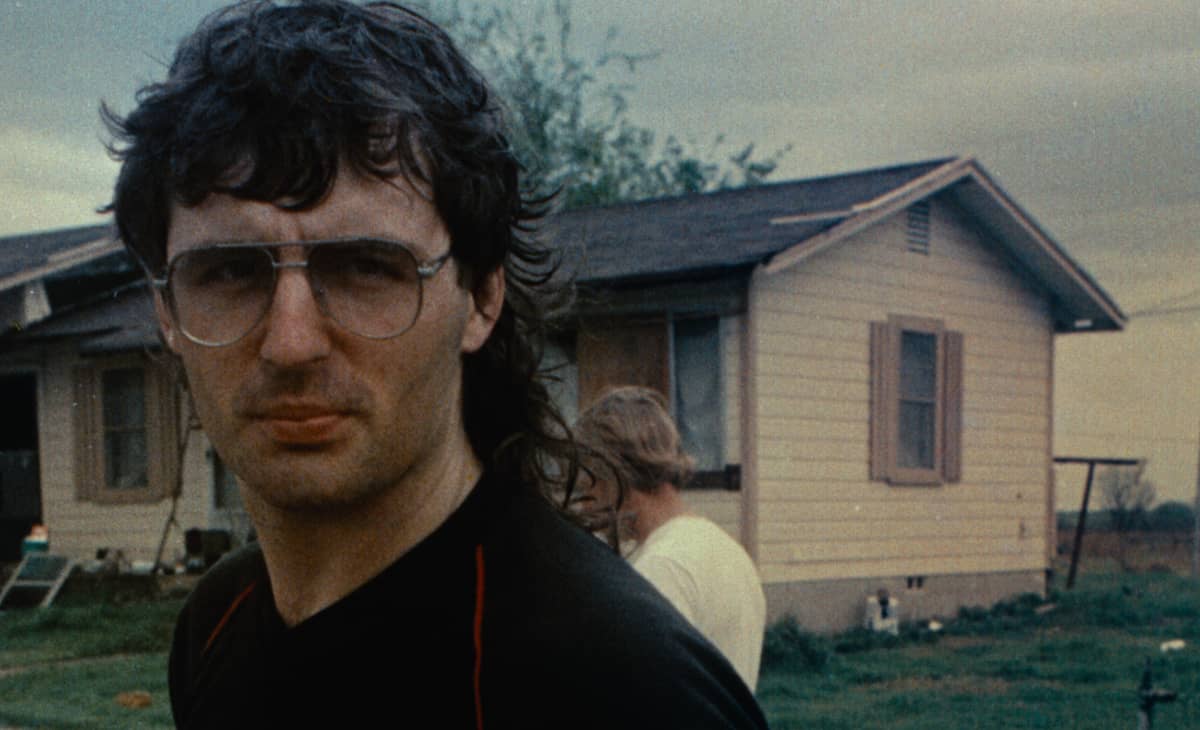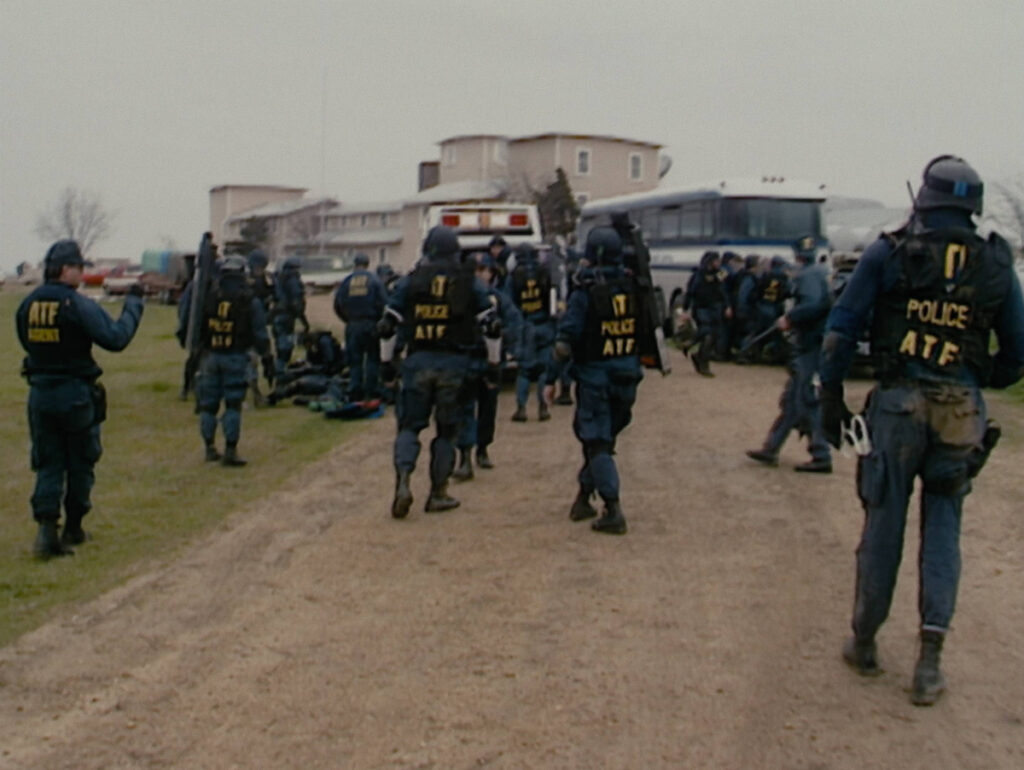Netflix Tries To Solve the Mysteries of the Raid on Waco That, 30 Years Ago, Horrified the World
Yet the implications for our own politics are left unexplored.

Americans were glued to their televisions in 1993, as federal law enforcement officials engaged in a 51-day standoff with a heavily armed Christian sect, the Branch Davidians, outside Waco, Texas. The siege ended with the group’s compound engulfed in flames. Four Bureau of Alcohol, Tobacco & Firearms agents and 82 Branch Davidians perished, including 22 children and the group’s leader, David Koresh.
This week, on the 30th anniversary — and banking on Americans’ fascination with true tales of crime, guns, religious zealotry, and violence — Netflix is releasing a three-episode series on the siege titled, “Waco: American Apocalypse.” The director, Tiller Russell, says he wanted to make the “definitive telling of the story,” a lofty goal as Waco has taken on mythic political significance, with debates and conspiracy theories about disputed facts.
The first episode of “American Apocalypse” tells the story of the initial firefight that broke out on February 28, 1993, when ATF agents tried to serve a warrant to search the Branch Davidians’ Mount Carmel compound. The religious group had amassed a cache of weapons, including more than a million rounds of ammunition, grenades, and semi-automatic rifles that they had converted to machine guns.
Mr. Russell procured access to raw footage from a local news station that was tipped off about the raid and covered it live from the scene. The result is a visually compelling, chronological retelling of events, narrated by interviews with ATF and FBI agents, as well as three Branch Davidian survivors.
Yet the episode glosses over two key questions that have plagued the Waco story for 30 years and helped turn the tragedy into a poignant symbol, on the right of center side of our national debate, of government overreach and the dangers of militarized law enforcement: Why did the ATF continue with the raid despite knowing ahead of time that the Branch Davidians were tipped off? And who fired the first shots — the ATF or the Davidians?
On the first question, a special agent with the ATF, Bill Buford, recounts how the Davidians were warned of the raid and says, “If we lost the element of surprise, we can’t go ahead with this.” The ATF, though, did go through with it, and four agents and six Branch Davidians died on that day. It was the biggest firefight on American soil since the Civil War. Who ordered the raid to proceed and what was the justification?
On the second question, the film pits Mr. Buford and a Branch Davidian survivor, David Thibodeau. Each says the other side fired first. The series fails to examine this question beyond two short sound bites. “All of the controversial stuff, they really stayed away from,” Mr. Thibodeau tells the Sun. He says that while he respects the director, “there’s not much new.”
At times the Netflix series feels like a well-produced “48 Hours” special with a more robust graphics package. It’s a bingeable primer for those who know little about Waco, but those seeking a deeper analysis are left wanting.
The other episodes unfold largely through a law enforcement lens. The director gained access to previously unseen video footage inside the FBI hostage negotiators’ room, which he uses to frame the story of the 51-day siege. This allows — even encourages — viewers to identify primarily with law enforcement.
It’s only when the negotiators decide to learn what they can about David Koresh, say, that the series runs his cursory biography. It’s through a single, albeit compelling, interview with Branch Davidian Kathy Schroeder, who still feels remorse for leaving the compound, that we see the mesmeric hold Koresh had on his acolytes.
Koresh gets harsh treatment — he fathered children with girls as young as 13, and he ultimately controlled which followers could leave the compound or whether to surrender. An FBI assistant special agent in charge, Bob Ricks, concludes at the end: “The hostage in this whole process was the FBI. We had to respond to the demands of David Koresh, and we were like actors in his play. He had already written the script.”
One of the series’ strengths is its unpacking of the internecine struggle within law enforcement as the siege unfolded. FBI hostage negotiators tried patiently to persuade Koresh to release more followers, while a tactical unit called the FBI Hostage Rescue Team favored more direct, confrontational action. The tension between these two groups and poor communication had serious consequences for everyone involved.
In the end, the Hostage Rescue Team prevailed: The lead hostage negotiator was transferred elsewhere and not replaced, and the Hostage Rescue Team started its aggressive psychological warfare tactics. These included shining floodlights on the compound and blasting the sounds of rabbits screeching, doors slamming, and Nancy Sinatra’s “These Boots Are Made for Walking” 24 hours a day to try to drive out the Branch Davidians.
After this failed, Attorney General Janet Reno signed off on using tear gas inside the compound, which led to the siege’s tragic conclusion. The series is ultimately an indictment of the aggressive, militaristic approach. On March 21, Day 22 of the siege, five adults left the compound and negotiators thought they’d finally turned a corner.
“This is the logjam breaking up,” an agent with the FBI crisis negotiator unit says. Yet later that day, the Hostage Rescue Team drives Abrams tanks over Koresh’s vintage Ford Ranchero, and Koresh then tells the negotiating unit they’ve lost control.

No other Davidians were released after that. When the Hostage Rescue Team member recounts the psychological warfare tactics they employed, the director cuts to Mr. Thibodeau, who says, “You’re saying you have a bunch of religious fanatics who are living in a building, who are unstable, and you’re going to try to make them more unstable, and you think that’s going to be a tactic that’s going to work?”
“That’s insane,” he says.
The FBI fundamentally misunderstood the power of the Davidians’ faith and adherence to Koresh’s apocalyptic prophecies. When the compound erupts in flames, the FBI and the press think the Branch Davidians will start coming out. Only nine did. The global television audience, watching live, was slack-jawed in horror. President Clinton, in a statement the next day, pinned the blame squarely on Koresh. Yet one FBI negotiator reflects: “We did not save every life we could. Therefore, in my mind, it’s a failure.”
The greatest deficit of the series is its unwillingness to examine the implications of Waco on the politics of today. Toward the end of the final episode, there is a brief mention of the Oklahoma City bombing. On April 19, 1995, on the two-year anniversary of the end of the Waco siege, Timothy McVeigh — inspired by the injustices he perceived at Waco — bombed the Alfred P. Murrah Federal Building, murdering 168 people.
McVeigh had traveled to Mount Carmel during the siege. “There is a direct line from Waco to Oklahoma City,” a Dallas Morning News reporter, Lee Hancock, says.
Waco continues to inspire gun rights and religious liberty groups, and it has been, at least by some, credited with spawning the resurgence of the modern militia movement. With 30 years of books, movies, and TV shows on the topic, a braver documentary would have explored the resonance of Waco in right wing politics today. That President Trump is holding his first 2024 campaign rally at Waco on Saturday speaks volumes.

